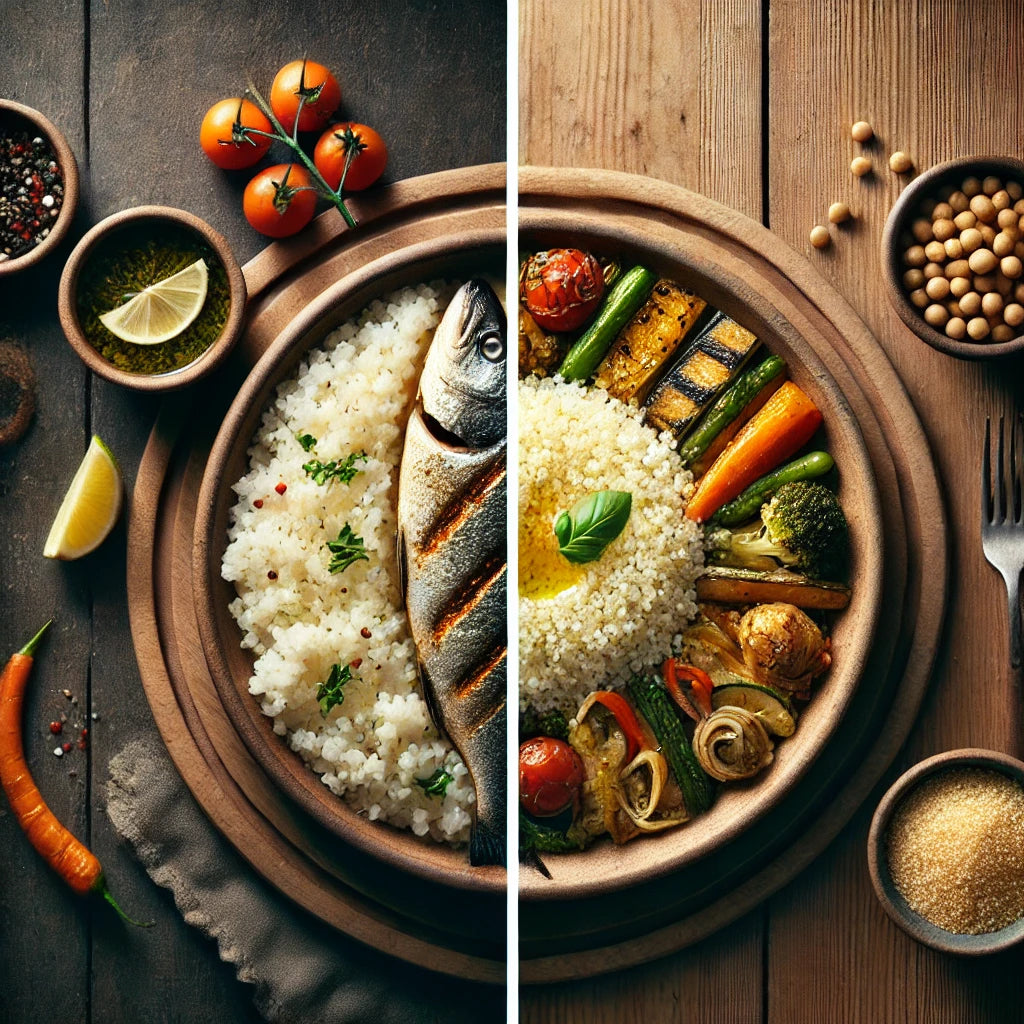
Attiéké vs. Couscous: What’s the Difference and Which Is Healthier?
Introduction
Attiéké and couscous are two popular grain-like dishes loved for their versatility and flavor. While couscous has long been a staple in Mediterranean and Middle Eastern cuisine, attiéké, a West African dish made from fermented cassava, is gaining international recognition. Both offer unique textures and flavors, but which one is the better choice for your diet? In this guide, we’ll compare attiéké and couscous in terms of texture, flavor, preparation, and nutritional value to help you make the right choice for your culinary and dietary needs.
Texture and Flavor
Attiéké has a light, fluffy texture that closely resembles couscous but is slightly coarser. Its tangy flavor, a result of the cassava fermentation process, adds a subtle zest to dishes, making it stand out. Couscous, on the other hand, has a more neutral taste and a finer texture, making it a versatile base for savory and sweet dishes. While both can adapt to various recipes, attiéké’s distinctive tang provides an edge for those looking for a flavor-packed alternative.
Preparation Process
Couscous is made from semolina wheat that is moistened, rolled into tiny granules, and then steamed or boiled. It’s quick and easy to prepare, often requiring just a few minutes of steaming. Attiéké, derived from cassava, undergoes a more intricate process involving peeling, grating, fermenting, drying, and granulating before it is steamed for consumption. While slightly more complex to make from scratch, attiéké is readily available in pre-packaged forms for convenience.
Nutritional Comparison
When it comes to nutrition, both attiéké and couscous offer unique benefits, but they cater to different dietary preferences and needs.
Couscous is a good source of carbohydrates and contains some protein, but as a wheat-based product, it is not suitable for gluten-free diets. Its calorie content is slightly higher, and it often lacks fiber unless enriched.
Attiéké shines as a gluten-free alternative, making it a safe and delicious choice for those with gluten sensitivities or celiac disease. It is naturally low in fat and contains fiber, which supports digestive health. Additionally, cassava, the base ingredient in attiéké, is a source of vitamin C, enhancing immunity and skin health.
Healthier Choice: Why Attiéké Wins for Specific Diets
Attiéké is a better option for individuals on gluten-free or low-fat diets. Its natural fermentation process increases its fiber content, which aids digestion and supports a healthy gut. Meanwhile, couscous remains an excellent choice for those seeking quick preparation and a more neutral base for their meals.
For those looking to reduce calorie intake, portion control is key, as both options are carbohydrate-rich. However, attiéké’s lower fat content and additional nutrients give it a slight edge in terms of overall health benefits.
Substituting Couscous with Attiéké
If you’re looking for a gluten-free alternative, attiéké is an excellent substitute for couscous in almost any recipe. Use it as a base for salads, pair it with grilled proteins, or serve it as a side dish for stews. Its tangy flavor and fluffy texture work well in both savory and sweet dishes, adding a unique twist to traditional recipes.
Conclusion
Attiéké and couscous each bring their own unique qualities to the table. While couscous is a quick, versatile staple for many cuisines, attiéké stands out for its gluten-free, low-fat profile and its distinctive tangy flavor. Whether you’re exploring new flavors, seeking healthier alternatives, or catering to dietary restrictions, attiéké is a delicious choice that deserves a place in your pantry.
